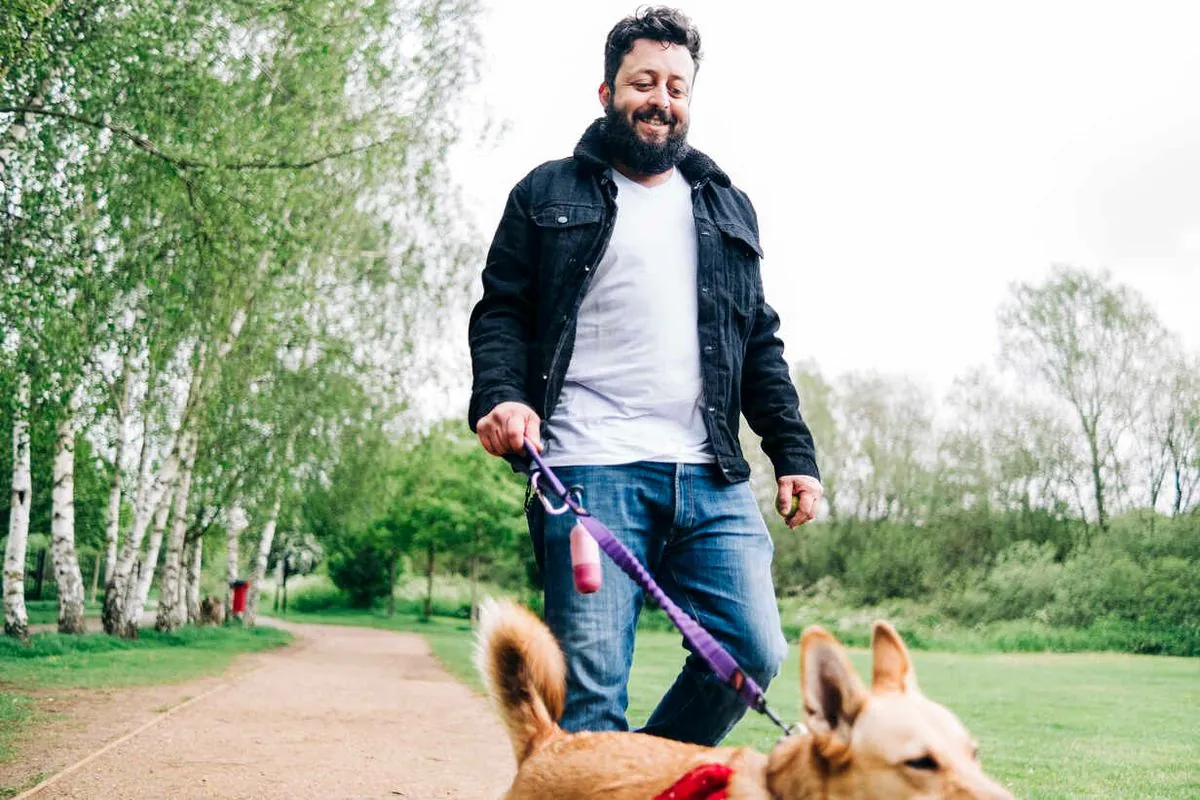The bond between humans and dogs has been a cherished relationship for thousands of years, with domestication believed to have occurred between 15,000 and 40,000 years ago. However, a recent study reveals a concerning trend in this age-old companionship: a significant increase in dog-walking injuries over the past two decades.
According to research conducted by Johns Hopkins University, emergency department visits for dog-walking injuries in the United States have risen dramatically. Ridge Maxson, the lead researcher, reports that the estimated annual number of adults seeking emergency care for such injuries increased from 7,300 in 2001 to 32,300 in 2020. Women accounted for 75% of these cases, with adults aged 40-64 comprising 47% of the total.
It's important to note that these figures only represent emergency room visits. Maxson suggests that many more individuals may seek treatment at primary care, specialty, or urgent care clinics for their injuries. The most common types of injuries reported include fractures, sprains, and head trauma.
The increase in dog-walking injuries coincides with the growing popularity of dog ownership. Currently, about half of U.S. households have at least one dog, with over 340 recognized breeds worldwide. The COVID-19 pandemic has further contributed to this trend, as more people adopted pets during lockdowns.
To mitigate the risks associated with dog walking, experts recommend several safety measures:
- Stay focused and avoid distractions like mobile phones
- Use a non-retractable leash of 6 to 8 feet in length
- Wear appropriate footwear with good traction
- Use reflective gear or lights when walking in low-light conditions
- Consider using a no-pull harness for better control
Personal experiences highlight the importance of these precautions. Noel Holston, a 76-year-old dog owner from Athens, Georgia, recounted an incident from the early 2000s when his pit bull suddenly bolted, causing him to step into a hole and break his ankle. Similarly, Susannah Johnston, a 64-year-old yoga instructor, shared her experience of fracturing a finger when her dog chased a squirrel.
Rural areas present additional hazards for dog walkers. Steven Haywood, an ER doctor in Corinth, Mississippi, emphasizes the risk of being struck by vehicles, especially on roads without sidewalks or wide shoulders. He stresses the importance of wearing reflective clothing and using lights for both human and animal visibility.
Experts also recommend balance and strength-training exercises, particularly for older adults, to reduce the risk of falls and fractures. Working with a dog trainer can benefit both the dog and the walker, improving leash control and the ability to read canine body language.
It's worth noting that dogs have remarkable abilities that make them valuable companions. They can understand up to 250 words and gestures, have a sense of smell 10,000 to 100,000 times stronger than humans, and have even been shown to detect certain types of cancer. These capabilities, combined with their loyalty and affection, make dogs cherished pets in millions of households.
In conclusion, while dog walking offers numerous health benefits and strengthens the bond between humans and their canine companions, it's crucial to prioritize safety. By following expert advice, using proper equipment, and staying aware of potential hazards, dog owners can enjoy walks with their furry friends while minimizing the risk of injuries.
"You can't really afford to relax when you walk a powerfully built dog with the torque of a small tractor. You have to pay attention."
